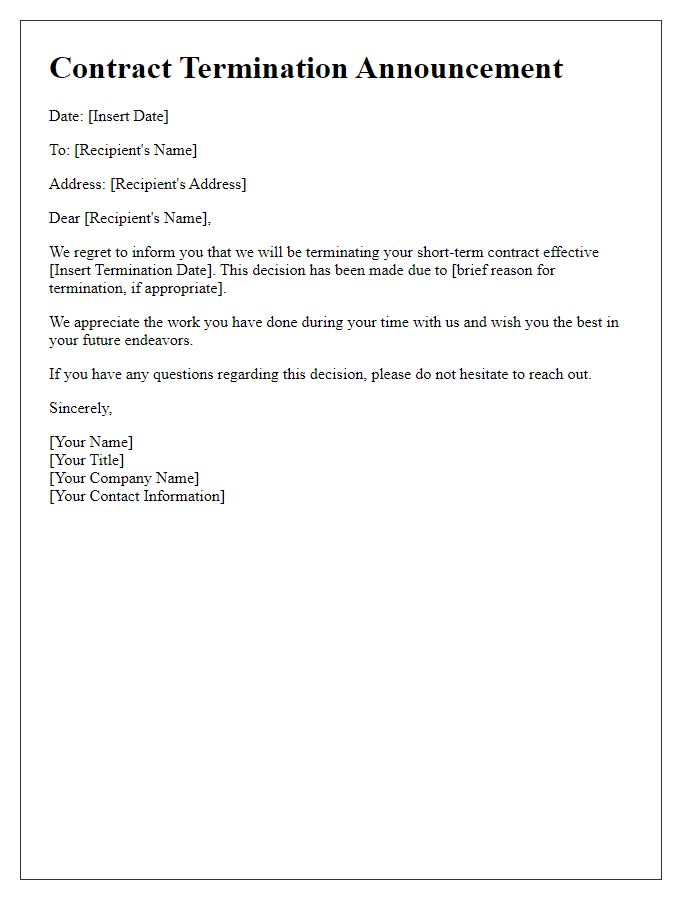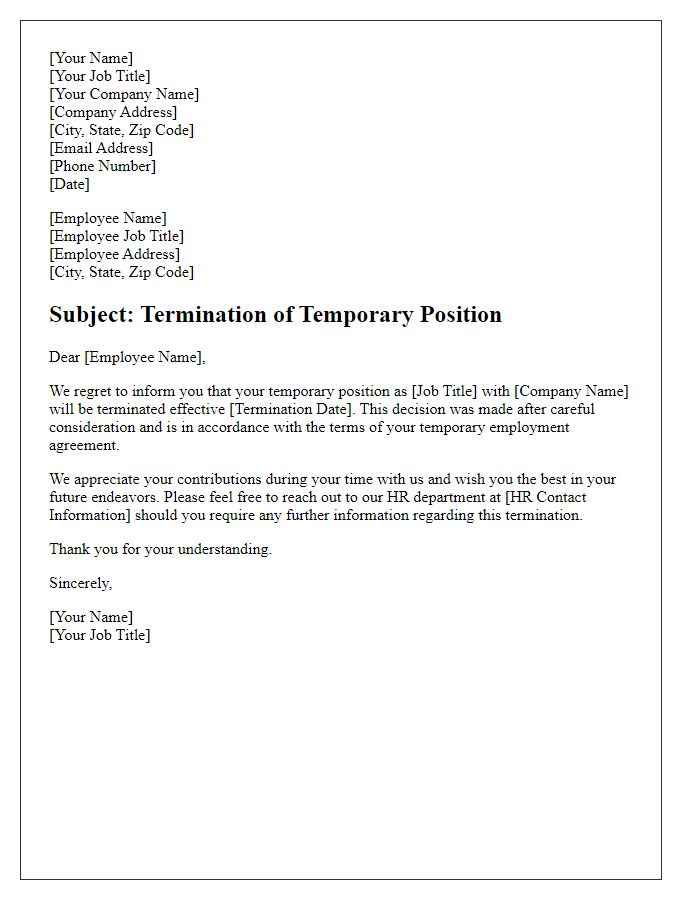Ending a temporary employee contract can be a delicate matter, and it's important to approach it with clarity and compassion. A well-structured letter can help convey the necessary information while maintaining a professional tone. In this article, we'll explore key components to include in your termination letter, such as the reason for termination and any final compensation details. Ready to craft the perfect letter? Let's dive in!

Employee and Employer Information
Temporary employee contracts often include essential details about both the employee and the employer. For instance, employee information may consist of the full name, address, and identification number, while employer information typically includes the company's name, address, and contact details. Specific dates are also crucial, such as the start date of employment and the end date of the contract. Key details about job title, responsibilities, and reasons for termination can provide clarity in the context of labor law compliance. These elements establish clear identification and facilitate the smooth processing of any final payments or benefits owed to the employee upon termination.
Contract Termination Date
A temporary employee contract termination can occur for various reasons, including project completion, employment evaluation, or changes in organizational needs. Employers often specify a contract termination date to provide clarity regarding the final working day. For instance, if a contract signed in July 2023 is set to conclude, a termination date of November 30, 2023, would signal the end of employment with the organization. Employees should receive formal notification of this date, allowing them to prepare for the transition. Additionally, any outstanding compensation, including unpaid wages and accrued benefits, should be clearly outlined to ensure a smooth conclusion to the temporary employment agreement.
Reason for Termination
Temporary employment contracts often conclude due to various reasons. Common factors include the completion of assigned projects, such as seasonal work in retail (like Black Friday sales), budget constraints that impact staffing decisions, or performance issues. Additionally, shifts in organizational priorities, such as a company downsizing during economic fluctuations, can prompt temporary contract terminations. Local labor laws, such as those in California or New York, may also dictate specific notice periods or requirements, affecting the termination process. Ultimately, communication is crucial in ensuring that the reasons for termination are conveyed clearly and professionally to minimize misunderstandings and maintain a positive rapport.
Final Compensation and Benefits
Temporary employee contracts often conclude with details regarding final compensation and benefits. Upon termination of employment, employees generally receive outstanding wages for hours worked until the last day, calculated at the agreed hourly rate, including any overtime applicable (typically time-and-a-half for hours exceeding 40 per week). Additionally, accrued benefits such as unused vacation days (often calculated based on company policy) may be compensated. Health benefits might continue for a limited duration under COBRA regulations, allowing employees to maintain coverage. All eligible reimbursements for expenses incurred during employment must be submitted by the outlined deadline to ensure timely processing. It is important to provide clear guidance on the return of company property, such as laptops or access cards, which should occur prior to the final paycheck issuance.
Return of Company Property
The process of terminating a temporary employee contract necessitates the return of company property, including items like identification badges, electronic equipment (such as laptops and tablets), and office supplies. Employees must ensure that all proprietary materials, such as confidential documents and client information, are returned by the termination date. This includes any software licenses associated with the company-issued devices. The company's human resources department provides a checklist for the retrieval process, designed to prevent any lapses in security and uphold intellectual property rights. Failure to return company property can result in deduction from final payments or legal action, reinforcing the importance of compliance in this process.













Comments